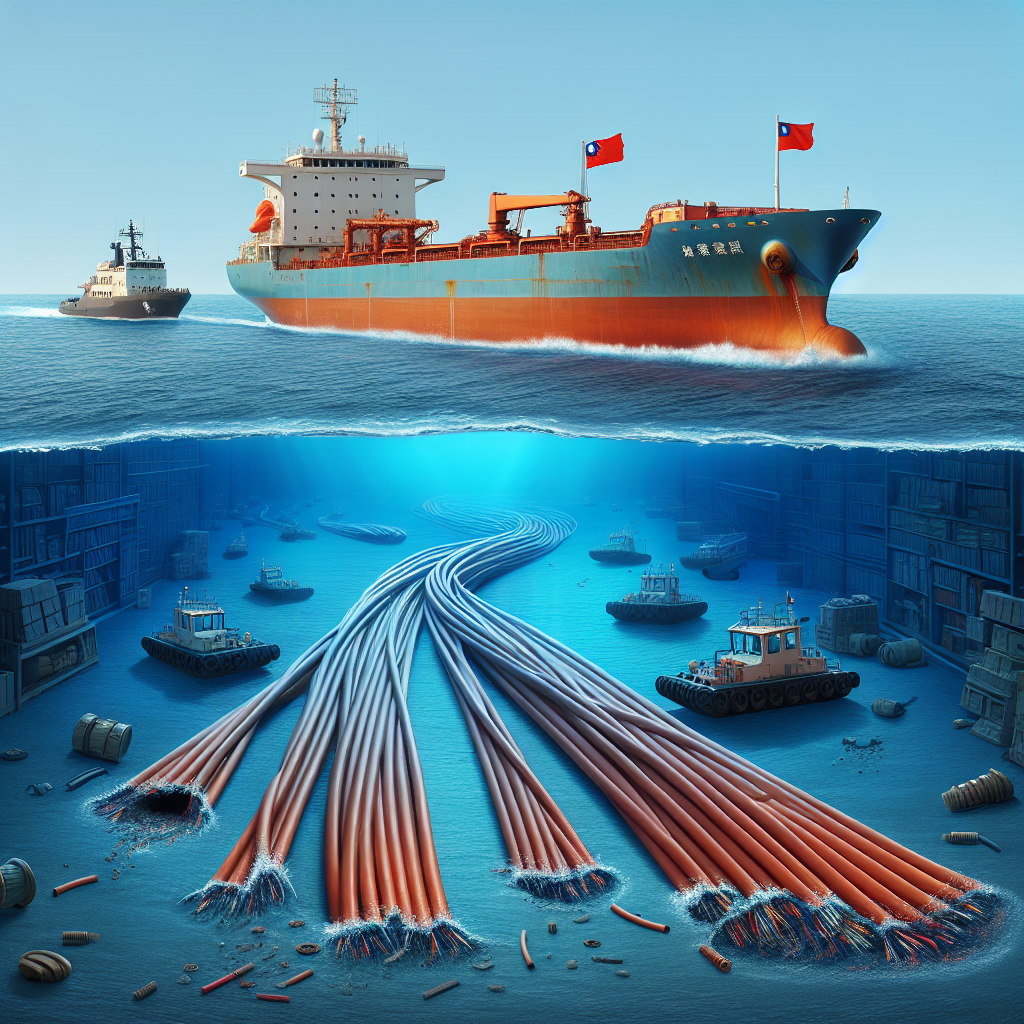Following the suspicion of a Chinese vessel cutting an undersea cable in the Baltic Sea, another Chinese ship is now being accused of dragging and damaging undersea cables near Taiwan. Taiwan has requested assistance from South Korea to investigate the alleged actions of the Chinese vessel.
On January 4th, Taiwan’s Coast Guard Administration’s official website released a press release stating that at 07:45 on the previous day (January 3rd), a four-core damage occurred to an undersea international cable in the northeast waters off Yehliu. The Tamshui Coast Guard of Taiwan received a report from Chunghwa Telecom at 12:40 on the same day, with Chunghwa Telecom stating that the cable had backup equipment, and domestic communications were not affected. Initial investigations suspect that the damage was caused by the Cameroon-flagged cargo ship “SHUNXIN39” passing through that area.
Although the vessel flies the flag of Cameroon, Taiwanese officials indicated that the vessel is owned by “Jie Yang Trading Limited,” registered in Hong Kong, and owned by Chinese citizen Guo Wenjie.
Chunghwa Telecom stated that after rerouting the data to other international undersea cables, data connectivity was immediately restored. However, Taiwanese authorities are concerned that the Chinese Communist Party (CCP) may secretly cut off Taiwan’s external communication in an attempt to annex Taiwan, as the CCP has not abandoned its ambition to forcibly unify Taiwan.
Chunghwa Telecom and Taiwanese government officials informed the Financial Times that the damaged cable is part of the Trans-Pacific Express cable system connecting Taiwan and the west coast of the United States. The undersea internet cable linking Taiwan and the U.S. is owned by an international consortium, including Chunghwa Telecom, AT&T from the U.S., NTT from Japan, Korea Telecom, and Chinese operators China Telecom and China Unicom.
The Financial Times reported that a Taiwanese Coast Guard official stated, “As we were unable to question the ship’s captain, we have requested Korean authorities to assist in the investigation upon the ship’s arrival at the next port of call.” Taiwanese national security officials mentioned that the vessel is expected to arrive in Busan in the coming days.
A Taiwanese patrol boat conducted an external inspection of the vessel last Friday, but officials were unable to board the ship due to adverse weather conditions.
According to data from the vessel tracking and maritime analysis provider MarineTraffic, “SHUNXIN39” has been shuttling in the waters near the northern coast of Taiwan since December 1. Taiwanese officials stated that this pattern indicates that the cable damage was not an accidental incident. Taiwan’s Coast Guard and other government officials also mentioned that the vessel’s automatic identification system signal and satellite data tracking showed that “SHUNXIN39” was anchoring at the location where the cable broke.
“This is another worrying case of global underwater cable disruption trend,” a senior Taiwanese national security official told the Financial Times. “Vessels involved in these incidents are usually old vessels with almost no legitimate business. The condition of this vessel (SHUNXIN39) is also very poor. It is similar to the Russian ‘shadow fleet’ vessels.”
Since 2022, a series of disruptions have occurred to power cables, telecommunications links, and natural gas pipelines, with Baltic countries remaining highly vigilant against potential sabotage. On November 17-18 last year, two Baltic Sea cables connecting Finland and Germany, as well as Sweden and Lithuania, were severed in Swedish waters. The Chinese bulk carrier “Yi Peng 3” was swiftly identified and wanted by Swedish authorities.
These incidents took place in Sweden’s territorial waters, where prosecutors are leading the investigation on suspicion of “destruction.” During the incident, the cargo ship commanded by a Chinese captain allegedly intentionally dragged its anchor for over a hundred miles. Intelligence officials from multiple Western countries believe that Chinese vessels were responsible for cutting the two cables but have varying opinions on whether the acts were “accidental” or “intentional.”
At the end of last year, an undersea power cable connecting Finland and Estonia was cut, leading Finnish authorities to detain an oil tanker departing from Russia.
The repeated damage to undersea cables has raised concerns among Western countries who fear that Russia, with assistance from China, may be engaging in what the White House calls “hybrid warfare,” although the Kremlin denies these accusations.

